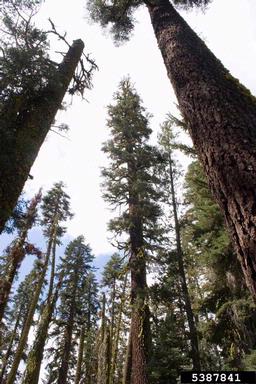
La página que intenta visitar sólo está disponible en inglés. ¡Disculpa!
The page you are about to visit is currently only available in English. Sorry!

 |
| Photo Credit: Donald Owen, California Department of Forestry and Fire Protection, Bugwood.org |
Since news broke in early June that Governor Arnold Schwarzenegger wanted to close nearly 80 percent of California’s state parks because of budget deficits, blogs, online forums, and media sites have been abuzz with protests against the proposal. In the hustle and bustle of California's current fiscal crisis however, many news articles failed to break down the implications of closing 220 parks and wilderness areas. What exactly would this drastic decision mean for visitors, the State Parks Department, and local businesses?
According to Sheryl Watson, a California State Parks Information Officer, closing the parks would include: installing locks and gates at entrances, closing visitor centers and bathrooms, halting garbage collection and cutting approximately 1200 jobs, from park rangers and trail maintenance staff to researchers and educators.
“The reason we would need to close these parks is because we have been reducing our budget for many years now,” says Watson. “There really isn’t anything else to cut. We’ve raised entrance fees, cut programs, this is kind of a last resort.”
The closures could mean no more Saturday morning hikes, school field trips, or dog walks in easily accessible state parks (unless you happen to live close to one of the 59 parks that will remain open, which will certainly be inundated with increased visitor traffic if the budget cuts proceed). Or could they? “We recognize we wouldn’t be able to keep people out of the parks,” Watson says. “But with no one there for maintenance, we are asking that people follow a carry in, carry out system. Just be careful and respectful.” The Department is also looking into developing teams of rangers, park employees, and law enforcement officers to help curb vandalism in the parks while they are closed.
But for a decision that is supposedly based on helping California’s budget deficits, the economic ramifications of closing the parks might just make the situation worse. Roy Sterns, a spokesman for the California Department of Parks and Recreation, told USA Today that in 2002, visitors to parks spent nearly $2.6 billion in the surrounding regions. The Lake Tahoe Chamber of Commerce estimates that park visitors generate nearly $9.5 million in their community alone.
Opponents of the park closure plan got some good news on Monday when the Budget Conference Committee voted to adopt a State Parks Access Pass, which will charge an additional $15 in vehicle license fees to all California residents to subsidize the Parks Department’s general funding. The plan will eliminate park access fees and fully fund the Department’s operations. Watson estimates that the Park Access Pass will also generate nearly $50 million extra for the department, which they plan to use to accommodate the increased visitor traffic and complete several maintenance projects.
While the Committee’s decision on Monday was good news for park-lovers, the proposal still has a few massive hurdles to overcome. In order for the State Parks Access Pass plan to come into effect, it needs to be passed by the California State Legislature and approved by Governor Schwarzenegger – two spots where proponents of the plan fear it will get voted down. Aaron McLear, a spokesman for Governor Schwarzenegger, told the San Francisco Chronicle on June 16th that the Governor and his GOP colleagues oppose any plans to raise vehicle license fees for the parks.
Where does that leave the millions of visitors and the Parks Department? No one really knows. I guess we will just have to wait for the decision.